© ROOT-NATION.com - Use of content is permitted with a backlink.
In a short time, 155 mm lightweight towed M777 howitzers will arrive in Ukraine, which will be equipped with the M982 Excalibur artillery projectile.
This news quickly spread to almost all the world’s media. Indeed, it became known that the United States, as part of its assistance to Ukraine, decided to provide us with 18 155 mm howitzers and 40,000 shells for them. Canada has also decided to join them, providing our “gods of war” with 4 155 mm howitzers and M982 Excalibur high-precision guided artillery shells. This is a really important, even historical moment.
Read also: Switchblade: American kamikaze drones to protect Ukraine
Ukraine’s transition to NATO’s new arsenal is unprecedented
It is incredibly difficult for our fighters on the front line to restrain numerous hordes of occupiers under constant enemy fire. Yes, our artillerymen also give a rag to the ruscists, destroying their armored vehicles, tanks and artillery calculations. But the issue of ammunition shortages is very acute at the moment. The fact is that all our artillery uses 152 mm caliber shells, and their reserves are not infinite. Partner countries are constantly working to help us with this problem by providing us with artillery shells of the required caliber from the reserves of the former Warsaw Pact countries. Everything that can still work with the Ukrainian arsenal of Russian-made heavy weapons is freed from perennial dust and sent to the Ukrainian border. But the number of these antiques, which are also often stored in questionable conditions, is limited.
Ukraine is currently running out of ammunition and other military supplies. The West’s ability to support Russian equipment is already very limited, so several Eastern European arms manufacturers that can still make the relevant ammunition and spare parts are likely to be struggling to break production records.
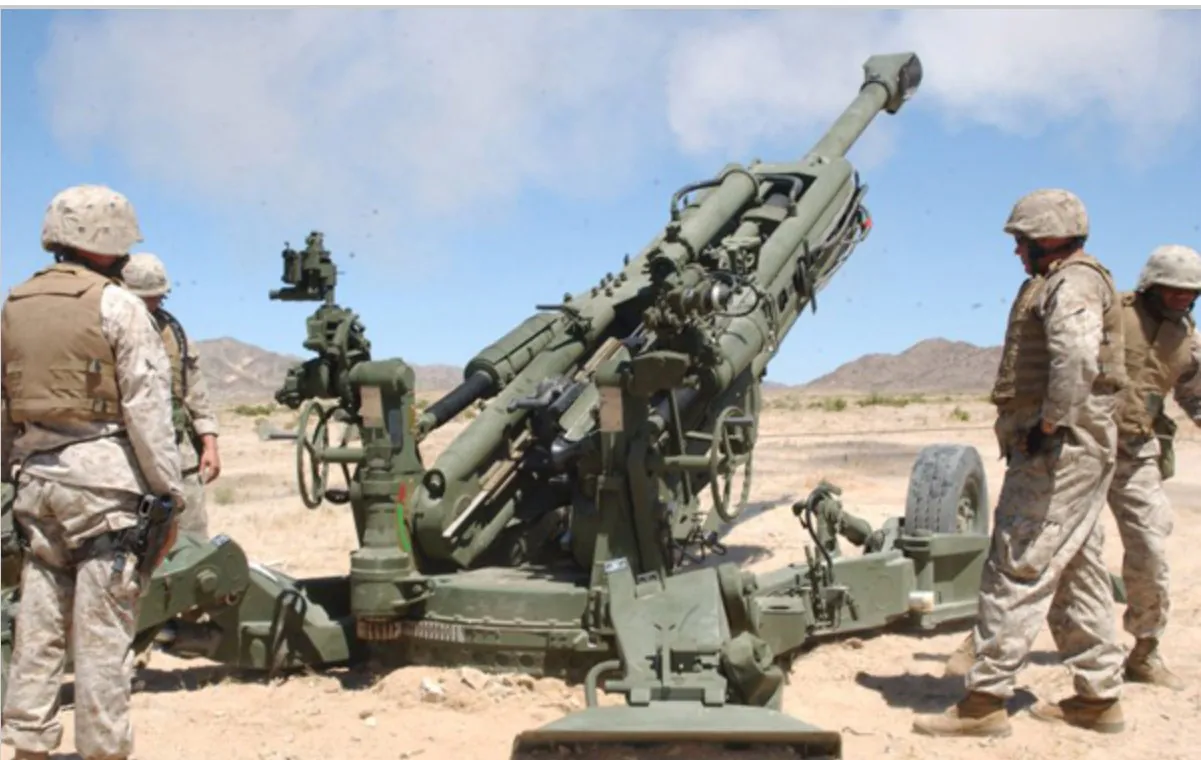
To continue the fight, Ukrainian artillery units must switch to 155 mm Western-style guns, and adopt and master the complex artillery guidance systems that are in NATO’s arsenal. Of course, this whole transition takes time and effort, it can not be done in one day.
The first attempts are underway. On April 13, the White House announced the transfer of 18 basic 155 mm artillery units and a huge number of shells to them, as well as anti-artillery radar systems AN / TPQ-36, which creates a basis for complete renewal of artillery and deployment of new infrastructure in Ukraine. The training of Ukrainian artillerymen has already begun. It is possible that in the coming days new M777 howitzers 155 mm caliber and powerful guided artillery shells M982 Excalibur will start pounding on the positions of the invaders.
Let’s talk in more detail about the 155 mm M777 howitzers and M982 Excalibur guided artillery shells.
Read also: Invasion of Ukraine: Bayraktar TB2 strike UAV review
155 mm M777 howitzer
Many of our ‘sofa experts’ uttered indignant cries to the fact that we were not given 155 mm M109A6 Paladins, but provided ‘only’ with M777 howitzers. I advise them not to rush to conclusions and sigh in frustration, because we are actually getting a very cool gun and another 40,000 shells to it. It should also be noted that both the M109A6 Paladin and the M777 use a similar digital fire control system, which increases the accuracy of conventional projectiles, and also allows the use of guided high-precision projectiles M982 Excalibur. Yes, of course, the self-propelled unit is more mobile in combat than the howitzer, although the M777 is easily towed.
The M777 BAe (British Aerospace) howitzer is the main towed artillery of the US Armed Forces. This is one of the smallest and lightest types of artillery weapons ever created, due to the fact that the design of this gun is made of titanium alloy. The M777 BAe is actually a British development, although it is now made in the United States.
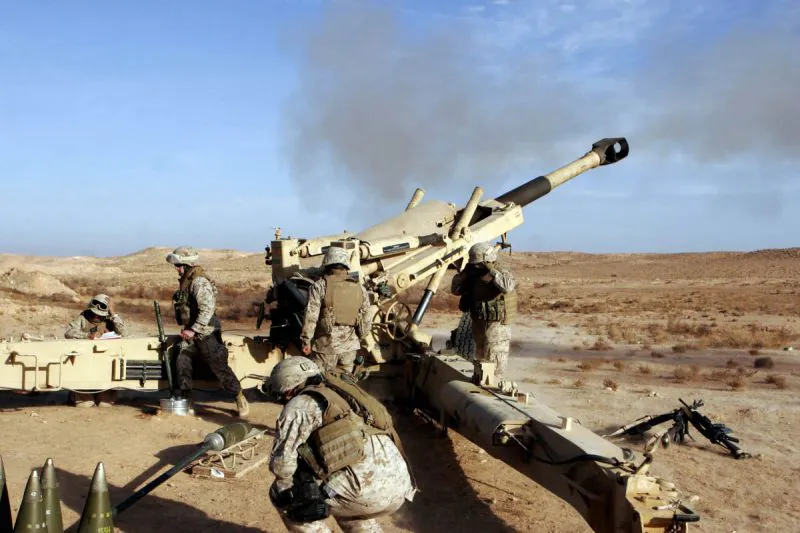
The M777 was developed in the early 1980s by the private company Vickers, which later merged with BAe, the current manufacturer, for the export market. The main market for this extremely light 155 mm howitzer was the US Army, which at the time had only the M198 howitzer in its arsenal, but it turned out that they were not good enough. The M198 howitzer was very highly mobile because it could be transported by aircraft, and at over 7,000 kg it was still a fairly powerful artillery unit. But Vickers decided that the configuration of the 155 mm howitzer could be further simplified, and that lighter materials could also be used in its construction. This allowed to create a weapon of the same firepower, while reducing its weight by almost a half.
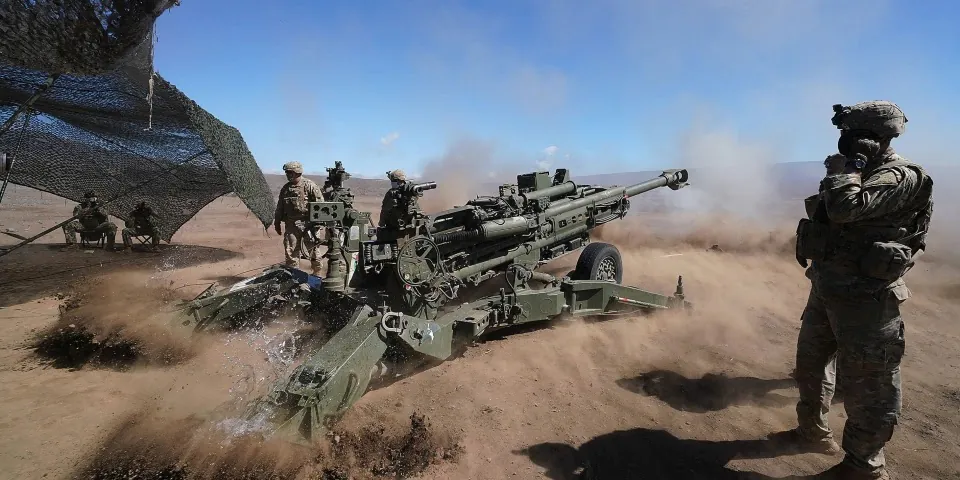
It is clear that it took some time and effort to make a 4-ton towed 155 mm caliber howitzer, so the draft was ready only in the spring of 1987. The main problem was the use of titanium alloys in the construction of new weapons instead of traditional steel, as the impressive strength of titanium alloys and a very high level of hardness makes processing this material extremely difficult. Soon the project was presented to the US Army, the US military was intrigued by the capabilities of these weapons. Because federal law prohibits the US military from purchasing foreign-made weapons, Vickers has teamed up with the American company Textron to make the weapons available in the United States. Thus, the M777 howitzer became effectively the main artillery weapon of the US Army.
Read also: All about the General Atomics MQ-9 Reaper
М777 armament
Despite its much lower weight, the M777’s firepower is no less than that of other towed 155 mm systems of the current generation. The howitzer’s barrel has a length of 39 calibers. The initial velocity of the projectile is 827 m / s. The howitzer has a maximum firing range of 24.7 km with standard projectiles and 30 km with EFRB (Extended Range Full Bore). It can also fire high-precision M982 Excalibur guided munitions with GPS control, which allows accurate fire at a range of up to 40 km.
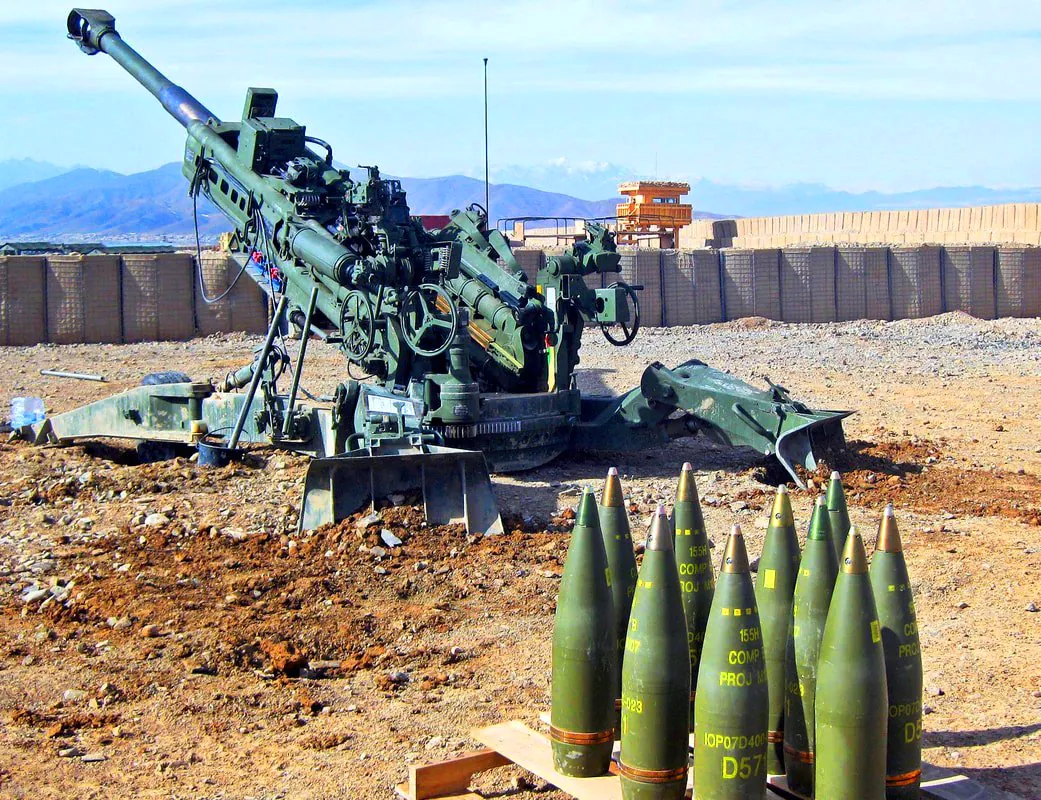
М777 design
Most of the weight of the M777 howitzer falls on two main components: the gun carriage and the gun barrel. The carriage consists of four extruded titanium tubes, a battery, two recoil cylinders and a balancing mechanism. The barrel assembly includes the barrel itself, the muzzle brake, the towing eye, the capsule feed mechanism, and the propeller. The carriage consists of two components: the body and the saddle. The body includes two front stabilizers and two separate supports equipped with self-digging shovels and shock absorbers. Hydrogas suspension is installed on both sides of the body, equipped with axle and wheels with aluminum rim. A small hydraulic hand pump is installed on each wheel station to raise and lower the system.
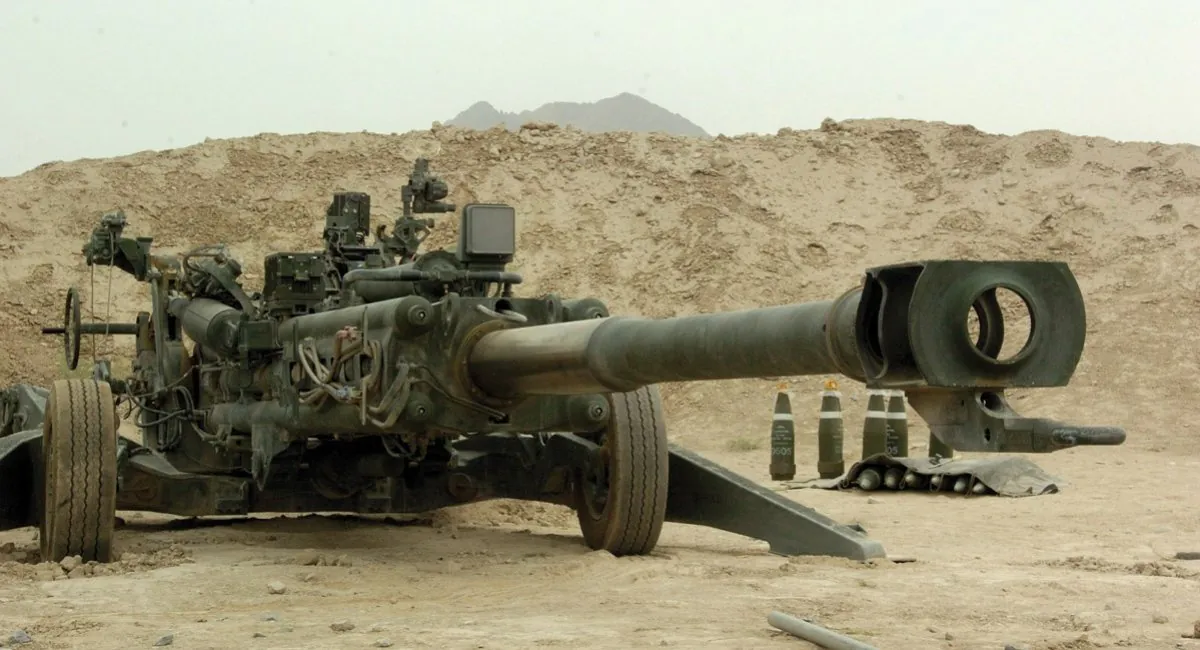
Small size and weight allow the M777 to be transported by USMC MV-22 Osprey multi-role aircraft, CH-47 helicopters or truckS. Therefore, the howitzer can be quickly moved to the battlefield and deployed faster than with the M198. Due to the smaller size, the howitzer is more convenient in storage and and transportation by air or sea. The crew required to maintain the howitzer consists of a minimum of 5 people. This is almost twice less than the M198, which had a crew of 9. The first tests of the M777A1 with Excalibur took place in August 2003, and the first projectiles were delivered in September 2006. Excalibur trials were successfully completed in March 2007. They were first used in Iraq in May 2007 and then in Afghanistan in February 2008. We will return to this miracle projectile.
Read also: Weapons of Ukrainian victory: Anti-aircraft weapons that protect our skies
Mobility of М777
The American howitzer M777 has a production weight of 3745 kg and, as I wrote above, can be transported by helicopter, transport aircraft and ships. The howitzer can be towed by 4×4 pneumatic brake vehicles with a capacity of more than 2.5 tons. In addition, the M777 howitzer itself is equipped with two wheels. When the M777 is in the firing position, the platform is lowered to the ground under the front of the carriage and the wheels are raised above the ground.
Read also: Weapons of Ukrainian victory: ATGM Javelin FGM-148 – ruthless to enemy tanks
М777 Equipment
The M777 uses a digital fire control system, similar to a self-propelled howitzer system such as the Paladin M109A6, to provide navigation, guidance and location, allowing it to be activated faster than howitzers of the previous generation.
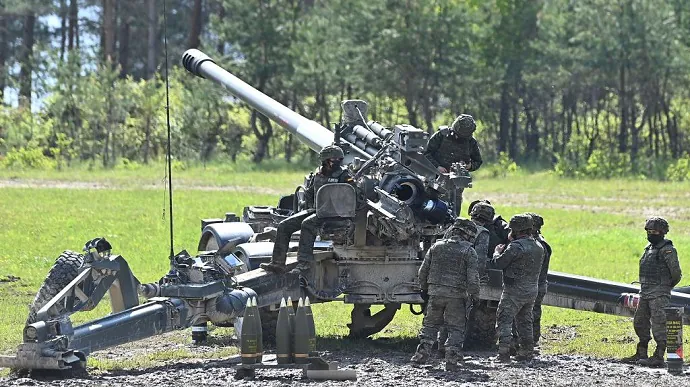
Specifications
- Type: lightweight towed howitzer
- Calibre: 155 mm
- Weight: 4200 kg
- Rate of fire: 5 rounds per minute
- Effective range: 30 km, 40 km with Excalibur projectile
- Dimensions: in towing mode – length 9,275 m, width 2,77 m; height 2,26 m; in firing mode – length 10,21 m, width 3,72 m, height 2,65 m
- Crew: 5-8 people
- Equipment: digital fire control system
- Manufacturer: Great Britain-USA
- Operator countries: Australia, Canada, India, Saudi Arabia, Ukraine and the USA
Read also: Weapons of Ukrainian victory: FIM-92 Stinger MPADS
M982 Excalibur guided artillery projectile
Now let’s take a closer look at the M982 Excalibur guided artillery projectile, which can be fired from the M777 howitzer.
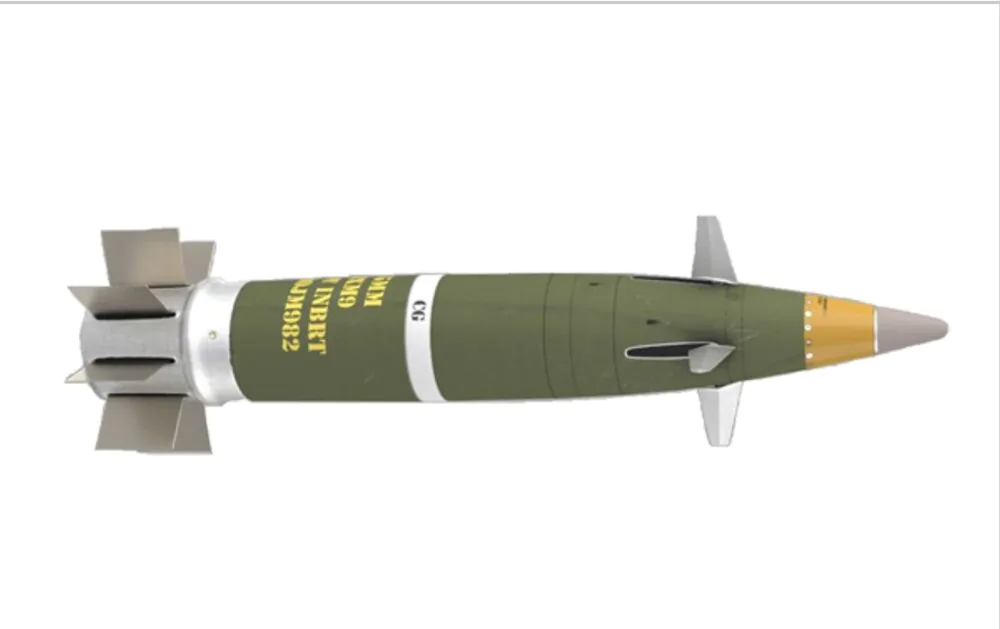
Thus, the M982 Excalibur is a projectile with GPS guidance with extended range. It was designed to hit stationary targets with high accuracy. M982 Excalibur succeeded the M712 Copperhead laser-guided artillery shell.
Development history
The development of a new guided munition with extended range was initiated in the United States in 1992. This projectile was developed jointly by Raytheon and BAE Systems. Raytheon had been supplying guidance systems, and BAE Systems had been manufacturing hull, base and payload. In 2004, the development program was combined with a joint Swedish-US program to create guided artillery munitions. During development and testing, it was known as the XM982.
The first tests of the Excalibur with the M777 light field howitzer at the firing range took place in 2003. The initial production of 500 projectiles was started in 2005. Operational tests of this projectile with M777A2 were completed in 2007. The M777A2 update included software that allowed the use of this projectile with GPS guidance. Excalibur had already been stationed in Iraq and Afghanistan at the time. The first guided projectile was used in Iraq in 2007. Its effectiveness was impressive. The shots turned out to be extremely accurate, with an error of only 5 m.
In 2015, the United States had already planned to purchase 7,474 Excalibur shells. In 2016, the unit cost, including development costs, was reported to be $ 258,777. But as early as 2017, the unit cost was reduced to $ 68,000. Excalibur is used by the U.S. Army and the Marine Corps. By 2018, more than 1,400 such shells had been fired in combat. Currently, this ammunition is also in service with Sweden, Australia, Canada, India and the Netherlands. Norway has also expressed interest in obtaining these guided shells. Now Ukraine has also joined the countries armed with this amazing guided projectile.
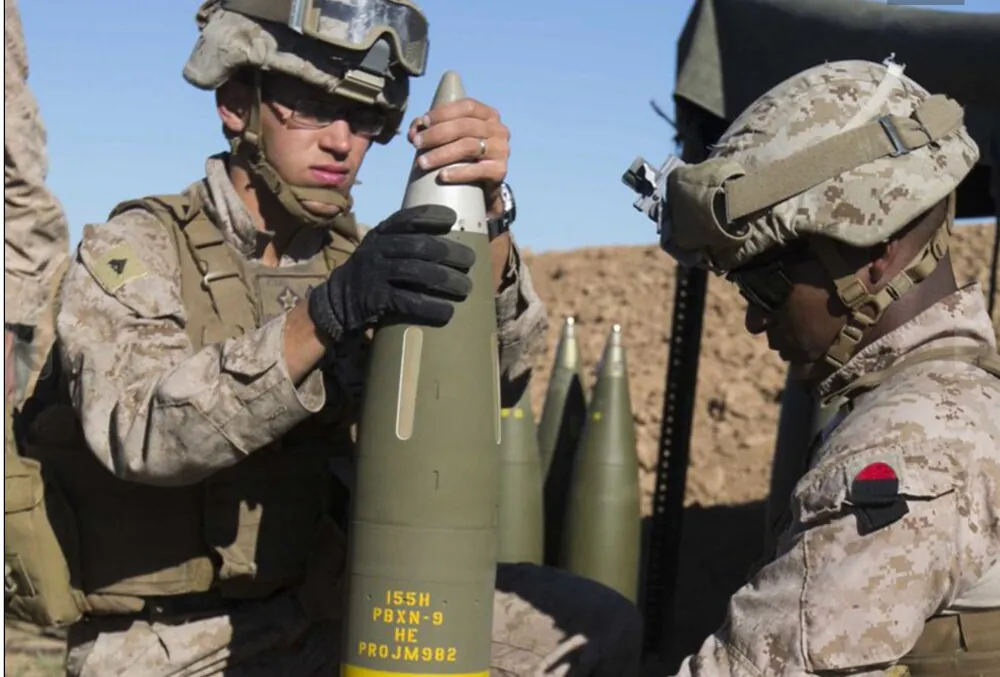
Excalibur is compatible with 155 mm artillery systems such as the M777 light howitzer, the M109A6 Paladin and M109A7 self-propelled howitzers. It is also compatible with other 155 mm artillery systems, such as the German PzH 2000, the South Korean K9 Thunder, the Japanese Type 99 and other 155 mm artillery systems.
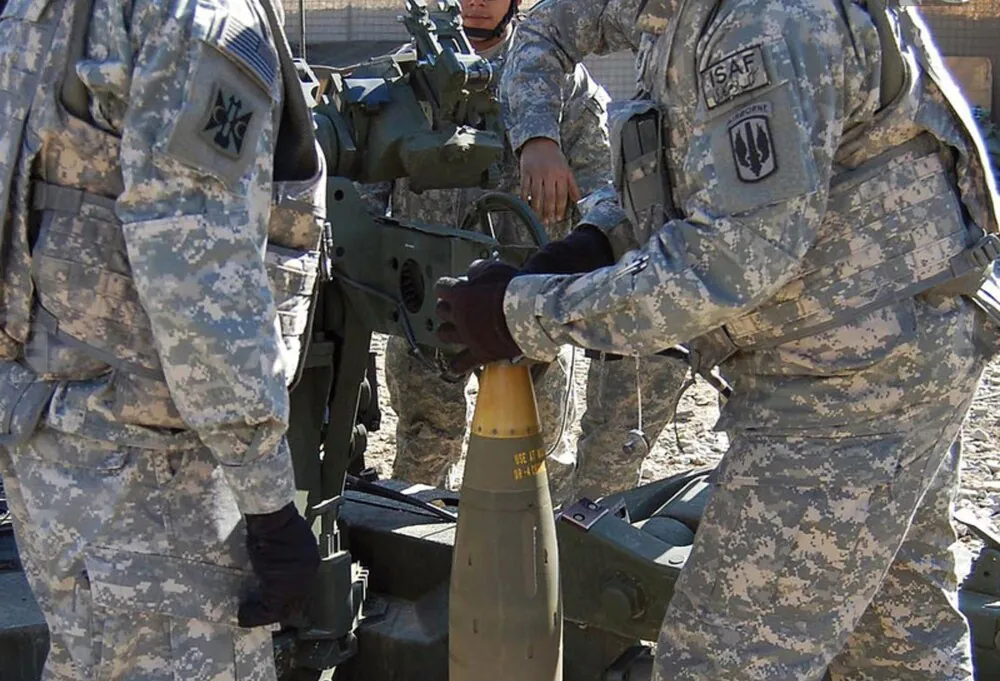
Excalibur has retractable hinged fins. Due to the stabilization of the fins, this projectile has excellent accuracy with an error of 5 m or even less, the combat experience of 2007 in Iraq showed that 92% of projectiles fall at a distance of not more than 4 meters from the target. So Excalibur is extremely accurate. This makes it safer to use it in the immediate vicinity of own troops or civilian structures than an unguided projectile. In fact, it can be used only 75-150 meters from your own positions. This minimizes damage to friendly forces and various civilian structures.
The programmable guidance system allows the howitzer crew to tune Excalibur to hit a specific geographical location, allowing the military to hit specific high-priority targets with single projectiles (such as a particularly problematic enemy firing emplacement). In addition to GPS guidance, Excalibur also has inertial guidance, which not only allows the projectile to maintain a ballistic arc, even in case of strong jamming, but also allows guidance when GPS is not available at all (although it will not be as accurate). In addition, Excalibur is resistant to GPS interference.
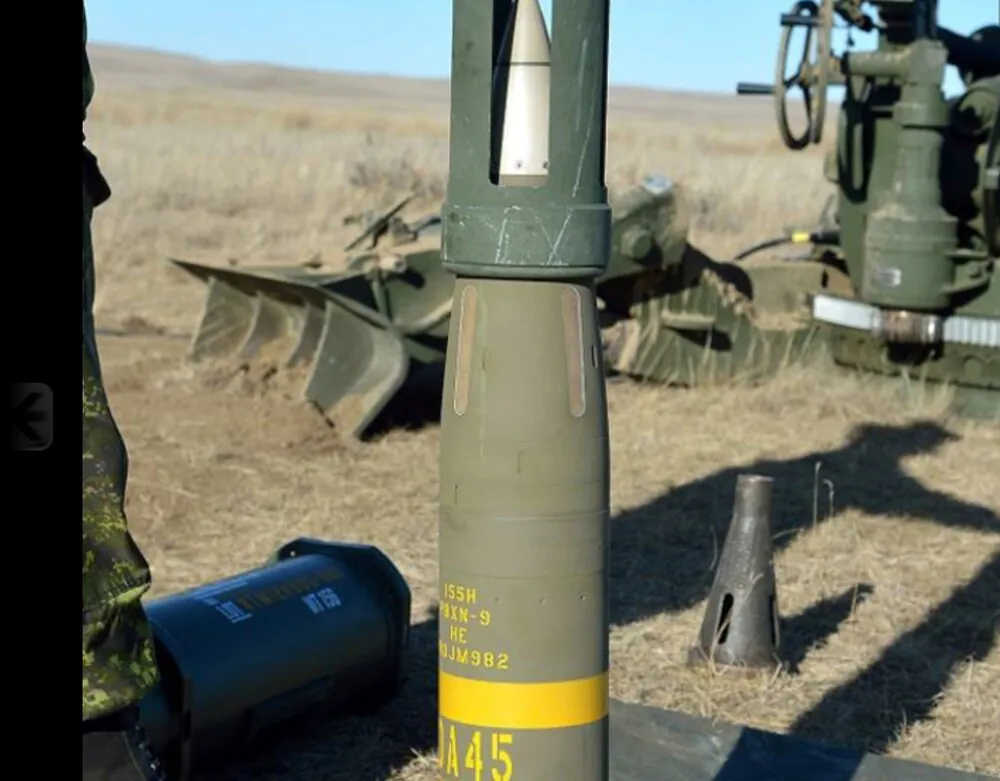
Excalibur uses different types of warheads, depending on the option. The base version weighs 48 kg and carries a 22-kilogram high-explosive warhead. The fuse can be programmed to explode in the air, in contact with a hard surface, or after it has penetrated the target.
One Excalibur projectile can hit a target that would otherwise require 10 to 50 unguided artillery shells to destroy.
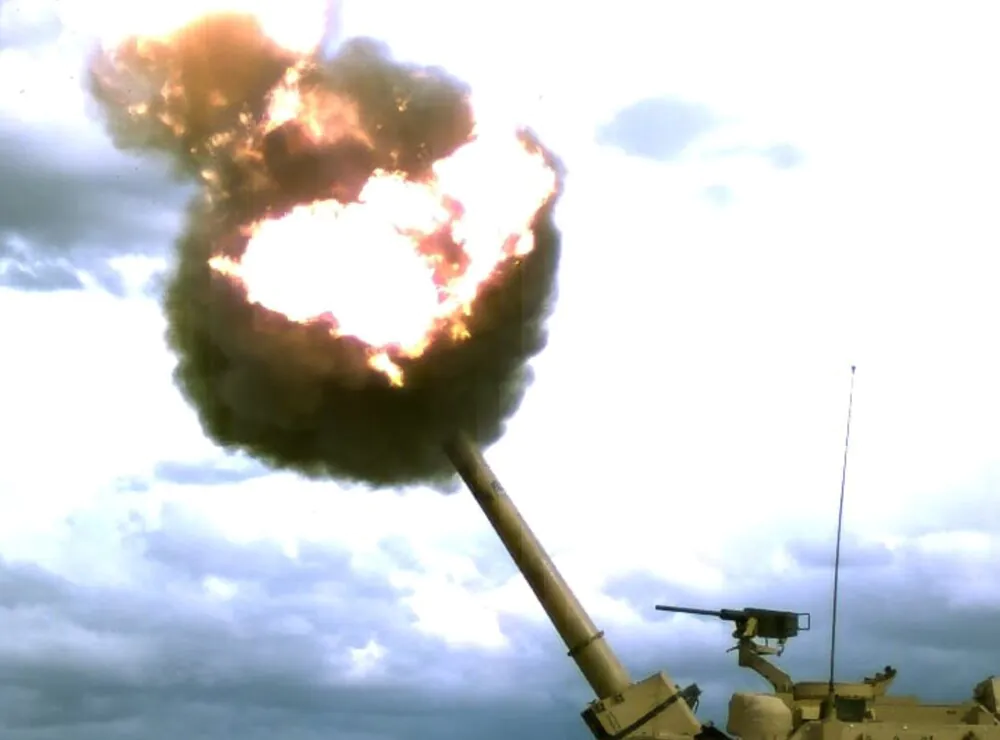
Excalibur’s previous production version, the XM982, which entered service in 2007, had a maximum range of 23 km. But in the same year the serial production of the base projectile M982 with a maximum range of 40 km was launched. Excalibur demonstrates a range of 40 km when firing from 155 mm weapons, such as the M777 light field howitzer or the M109A6 Paladin self-propelled howitzer.
Read also: Weapons of Ukrainian Victory: Review of Starstreak MPADS
Modifications of M982 Excalibur
There are several modifications for guided projectiles of the Excalibur system.
M982A1 — serial production at a reduced cost, the one that entered service in 2016. The upgraded projectile itself has the same capabilities as the original M982.
Excalibur S – this is an improved version with the addition of semi-active laser guidance. It can hit moving targets, or change the target after the shot. The development of this ammunition was initiated by Raytheon in 2013 as a private idea.
Excalibur N5 is a smaller 127mm version of the Excalibur S. It was specifically designed for naval guns used on destroyers and cruisers.
Excalibur EST (Excalibur Shaped Trajectory) – this is a version of the projectile that can approach the target at an angle. It was demonstrated in 2018 and soon launched into production.
GP155B is a Chinese copy of the Excalibur guided projectile.
Read also: Russian chemical weapons: Threats and possible consequences
The arrival of the 155 mm American howitzer M777 is only the beginning of the transition process of the Ukrainian Armed Forces artillery to NATO standards, which will allow to replenish the ammunition stockpiles. Any help from Western partners is always invaluable, especially when it solves urgent problems in the fight against the occupiers. Now our artillerymen will be able to inflict even more devastating blows on the positions of the Muscovites, which will break the backbone of the ruscist invaders and finally expel them from our territory. The earth will burn beneath their feet, literally and figuratively.
I am sure that Victory will be ours! Everything will be Ukraine! Glory to Ukraine! Death to enemies!
You can also help Ukraine fight with Russian occupants via Savelife or via an official page of the National Bank of Ukraine.
Read also: Weapons of Ukrainian victory: ATGM Stugna-P – Russian tanks are in trouble


Great article, Thank You for the interesting details. The M777 is a very reliable and I am sure it will serve the UA Armed Forces well in its’ victory. Slava Ukraini!
Thanks for your support!